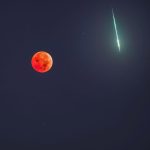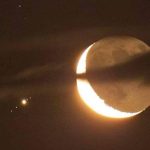Key Takeaways
- Over 1.5 million photographs of Earth have been taken by astronauts from the ISS and other spacecraft over the past 60 years.
- The Earth Science and Remote Sensing (ESRS) unit at NASA’s Johnson Space Center catalogs these images.
- Astronauts like Jeff Williams share their favorite views, capturing breathtaking natural phenomena like erupting volcanoes and auroras.
- Astronaut photography unveils surprising details, such as vibrant green lights from fishing boats in Southeast Asia.
- Mesospheric clouds, also known as noctilucent clouds, present unique textures and were discovered through astronaut images.
For six decades, human eyes have been privileged to gaze upon Earth from a celestial vantage point like no other: the International Space Station (ISS). This unique perspective has resulted in an awe-inspiring collection of over 1.5 million photographs that capture our planet’s beauty and natural wonders. The Earth Science and Remote Sensing (ESRS) unit at NASA’s Johnson Space Center has meticulously cataloged these images, offering a captivating glimpse into Earth’s diverse landscapes and intricate phenomena.
Astronaut Jeff Williams, renowned for his ISS expeditions, recounts one memorable incident where he unexpectedly captured an erupting volcano in 2006. While photographing islands off Alaska’s coast, a nagging feeling led him to reframe an image, revealing a plume of volcanic activity. This accidental shot symbolizes the serendipitous nature of capturing Earth’s grandeur from space.
The captivating dance of auroras, as witnessed from orbit, has left a lasting impression on ISS program scientist Will Stefanov. Through time-lapse imagery, the auroras reveal their dynamic, ever-shifting nature. These visual spectacles provide a direct connection between spacefarers and the intricate workings of our planet’s magnetic field.
Astronauts’ lenses have also turned to Earth’s surface, unveiling hidden marvels. Jeff Williams shares his technique of photographing the Grand Canyon, employing rapid sequential shots that, when stitched together, create breathtaking mosaic vistas. Andrea Meado, a Crew Earth Observations payload operator, stumbled upon an intriguing phenomenon: the illuminated green lights of Southeast Asian fishing boats, an enigmatic sight only space could unveil.
Mark Lambert, a Crew Earth Observations data scientist, finds beauty even in the seemingly mundane. His fascination lies in nocturnal images of Earth’s transition between day and night. Among these images, the unexpected charm of polar mesospheric clouds emerges, a celestial artwork that remained undiscovered until human eyes beheld them from space.
These mesmerizing images also offer a glimpse into Earth’s remote corners. Earth scientist and ISS mission operator Justin Wilkinson delves into the enigma of megafans—massive fan-shaped deposits formed by multiple streams. Wilkinson’s journey to understanding our planet through the lens of his camera has been an enlightening adventure, revealing Earth’s intricacies in stunning detail.
In retrospect, the astronaut photographers’ endeavors have allowed us to discover Earth anew. As Wilkinson fittingly notes, these images offer a profound connection to our planet. Through the eyes of those floating above, we find a fresh appreciation for the intricate dance of nature and the unparalleled beauty of our home in the cosmos.
Read full article on Earth Observatory
#1

Sunrise casts long shadows from the clouds across the Philippine Sea as the International Space Station orbited about 200 miles east of Taiwan.
#2

The image was taken by a member of the Expedition 48 crew. The image has been cropped and enhanced to improve contrast, and lens artifacts have been removed. Image Credit: NASA Caption: M. Justin Wilkinson, Texas State University, Jacobs Contract at NASA-JSC
#3

Western Pacific Ocean sunset photographed by an International Space Station astronaut orbiting high above the Philippine Sea (latitude 20.2, longitude 131.7) on 21 July 2003 at 10:17:20.420 GMT.
#4

A golden reflection of the rising sun on the Earths oceans greets the crew of Expedition 47 on board the International Space station. Another day begins for the crew in their pursuit of science that will aid humankind. Author: NASA
#5

December 30, 2021—The sun shines above the Earth’s horizon as the International Space Station orbited 264 miles above the Canadian province of Quebec. Credit: NASA
#6

An orbital sunrise seen from the International Space Station. Instagram/ @iss
#7

A photograph taken by a member of Expedition 34, aboard the International Space Station, looking down on the Bahamas from orbit, on January 13, 2013
#8

Astronauts on the ISS took these incredible photos (Image: NASA)
#9

Russian cosmonaut Sergey Ryazanskiy takes a break during a six-hour spacewalk on the International Space Station, August 22, 2013. Johnson Space Center


